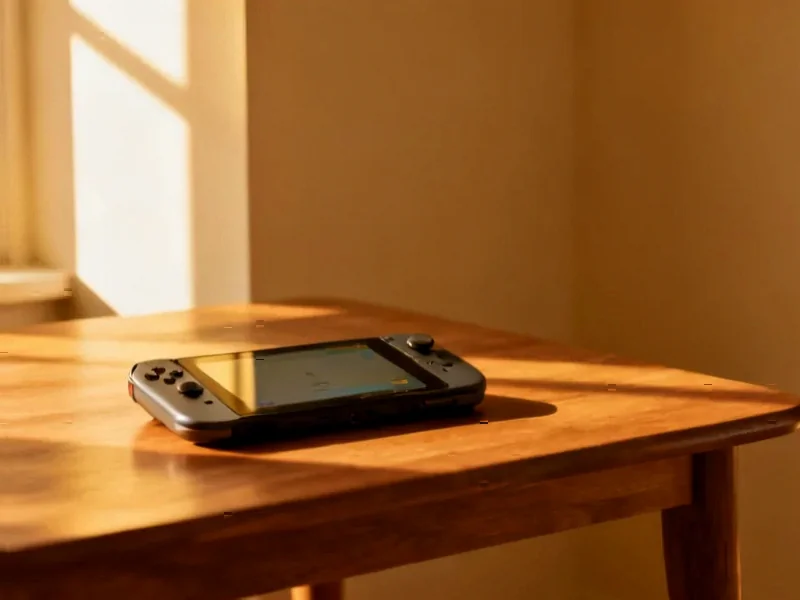According to PCWorld, Microsoft is officially expanding testing of its Xbox Fullscreen Experience to MSI’s handheld gaming devices, less than a month after the feature debuted exclusively on the Asus ROG Ally. The interface, now shortened to FSE, is rolling out to MSI Claw models through the Windows Insider Program for users on the Dev or Beta Channel for the KB5067115 build of Windows 11. Supported devices include the original Claw A1M, the newer Claw 8 AI with Lunar Lake processors, and the Claw A8 variant with AMD Ryzen Z2 processors. Microsoft indicates that other manufacturers will have the option to enable FSE “in the coming months,” suggesting ongoing negotiations with hardware partners. This rapid expansion signals Microsoft’s strategic acceleration in the handheld gaming market.
The Windows Gaming Imperative
Microsoft’s swift expansion of the Fullscreen Experience reveals a critical strategic imperative: defending Windows’ position in the rapidly growing handheld gaming segment. With Steam Deck’s SteamOS establishing a compelling alternative to traditional Windows gaming, Microsoft can no longer afford to treat handheld PCs as secondary devices. The company needs to ensure that Windows remains the preferred platform for both consumers and hardware manufacturers in this space. By providing a tailored, console-like experience that directly competes with SteamOS’s user-friendly interface, Microsoft is addressing a fundamental weakness in Windows’ gaming proposition for handheld form factors.
Beyond Hardware Exclusivity
The rapid deployment to MSI devices suggests Microsoft is prioritizing platform ecosystem growth over short-term hardware partnerships. While the Asus ROG Ally likely had some period of exclusivity as part of its Xbox branding deal, Microsoft appears to be using the Windows Insider Program as a strategic workaround to accelerate broader adoption. This approach reflects a fundamental business model calculation: the long-term value of keeping Windows relevant across multiple OEMs outweighs the benefits of temporary exclusivity with a single partner. Microsoft’s primary revenue in gaming comes from software, services, and its 30% cut of Xbox Store sales, not hardware margins, making widespread platform adoption the smarter play.
Competitive Positioning Against Valve
Microsoft’s move represents a direct response to Valve’s growing influence in the handheld space. The Steam Deck’s success has demonstrated that there’s substantial demand for dedicated gaming handhelds beyond Nintendo’s Switch, and Valve’s control over both the hardware and software stack gives them significant leverage. By offering a compelling Windows-based alternative that maintains compatibility with existing Windows game libraries while providing a console-like experience, Microsoft is attempting to level the playing field. This strategy allows hardware partners like MSI, Lenovo, and others to compete with Steam Deck without being locked into Valve’s ecosystem.
The Services Revenue Play
Ultimately, this expansion serves Microsoft’s broader gaming services strategy. A successful handheld Windows ecosystem drives engagement across Microsoft’s gaming portfolio, including Xbox Game Pass, Xbox Cloud Gaming, and the Microsoft Store. Each handheld running the Fullscreen Experience represents another potential subscription and digital storefront customer. As Microsoft continues its pivot toward services and subscriptions, ensuring Windows remains the platform of choice for gaming across all form factors becomes increasingly crucial to maintaining their 30% cut of PC game sales and driving Game Pass adoption.
OEM Relationship Calculus
For hardware manufacturers like MSI, embracing Microsoft’s Fullscreen Experience represents a strategic compromise. While they sacrifice some control over the user experience, they gain a polished, gaming-optimized interface that would be costly to develop in-house. More importantly, it provides immediate parity with Asus’s offering and a credible answer to SteamOS. This dynamic creates a virtuous cycle for Microsoft: as more manufacturers adopt FSE, the platform becomes more attractive to consumers, which in turn pressures holdouts to follow suit. The result is a more cohesive Windows handheld ecosystem that can collectively compete against SteamOS’s unified experience.




